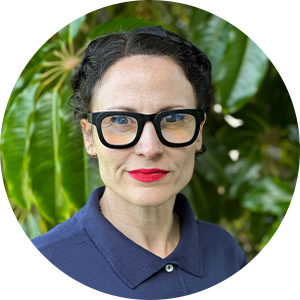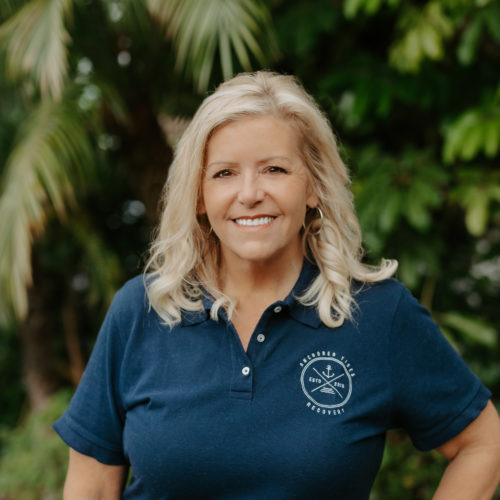
If someone considers downgrading from hard drugs, it may be one specific approach to dealing with substance abuse that they feel will work for them. Unfortunately, as a society, we tend to view hard drugs as bad and so-called soft drugs as not so harmful. The reality is that a hard or a soft drug can lead to addiction, health problems, and many adverse effects.
The distinction between a hard and soft drug for many people is legality. Even this isn’t necessarily a good way to think about things.
For example, alcohol is legal if you’re 21 and older, yet it can be one of the deadliest substances. There are also states such as Oregon that are focusing efforts on decriminalized hard drugs. Under new legislation in Oregon for decriminalized hard drugs, you can’t be arrested for having small amounts of drugs like heroin or methamphetamine, both of which are dangerous, deadly drugs. The best option for most people who struggle with drug abuse is to be entirely drug-free rather than downgrading from hard drugs. Many in the recovery community don’t believe any drug use is conducive to a healthy lifestyle if you deal with addiction.
Below, we go into more about the differences between hard and soft drugs and what you should know about the concept of gateway drugs as well.
Hard vs. Soft Drugs
There are different ways you might view the differences between hard and soft drugs. For example, in some countries, there is a legal distinction made between the two, with soft drugs theoretically being less harmful to people’s health than harder ones. In the Netherlands, soft drugs are not considered harmless, but they have less severe effects. Sedatives, marijuana, and sleeping pills are soft drugs under this model.
Hard drugs in the Netherlands include heroin, amphetamine, and cocaine. The penalties for drug possession of a hard versus soft substance vary from one another. In the United States, we have controlled substance schedules that guide our federal drug laws and laws surrounding drug possession.
A controlled substance is one with a high potential for abuse or addiction. The Controlled Substances Act puts all substances regulated under federal law into one of five schedules. Along with the abuse and addiction potential, whether or not the substance has a medical use is also a consideration.
- Schedule I drugs have a high potential for abuse, with no current, federally accepted medical applications in the United States. There is no safe use for these substances. Schedule I drugs include heroin, LSD, and GHB. Interestingly, marijuana is Schedule I in the U.S., yet it’s legal for medicinal and recreational use in many states across the country. We talk a little more about marijuana and its legality below.
- Schedule II drugs have high abuse potential but with some accepted medical uses. These illegal drugs include cocaine, methadone, morphine, PCP, and methamphetamine.
- Schedule III drugs have a lower potential for drug addiction than Schedule I or II substances, with medical uses in the U.S. Schedule III substances are hydrocodone, codeine, anabolic steroids, and barbiturates.
- Schedule IV substances have a relatively low potential for abuse than Schedule III, with accepted medical uses. Schedule IV drugs include prescription medications like Valium and Xanax.
- Schedule V substances have the lowest potential for dependence compared to substances on the other Schedules, and cough medicines with codeine are an example of these.
While drug Schedules are one way to distinguish the risks of substances, there’s not a particular scientific or legal distinction that we can point to when we talk about hard and soft drugs.
- For some people, it’s not about the legality or the impact on criminal records for something like simple possession. Instead, it might be about how socially acceptable it is to use a substance.
- For example, it can be more socially acceptable to use prescription pain medicines rather than heroin in some people’s eyes, even though both have similar effects and risks. Both prescription pain medicines and heroin cause dry mouth, slurred speech, and potentially deadly short-term effects, yet one category includes FDA-approved medications.
- A list of hard drugs for a lot of people might include heroin, cocaine, and methamphetamine. For others, since cocaine isn’t as addictive as heroin, they might not have it on their list of hard drugs.
There are a lot of gray areas when making distinctions like these between substances.

America’s Deadliest Drugs Are Legal
Again, legality and the classification of drug crimes aren’t always an excellent way to separate a hard and soft drug. In the United States, the three deadliest drugs are all legal.
- The first is tobacco. More Americans die from smoking-related health problems than drug overdoses, car accidents, and homicides combined.
- Cigarette smoking may lead to one in five deaths in America every year.
- The U.S. has seen tobacco use go down significantly in recent decades, but it’s still a top killer.
The next-deadliest drug is alcohol.
- Alcohol-related health problems kill tens of thousands of people every year, which doesn’t factor in causes like homicide and drunk driving.
- Alcohol-related deaths have been steadily going up in the U.S. over the past few years, and official death toll numbers may be significantly undercounting alcohol deaths.
- There are so many ways that alcohol can be one of the deadliest drugs. The health effects of excessive drinking are just one type of risk. There are injuries, crime, and violence, for example, that make alcohol use particularly dangerous and deadly.
The third deadliest drug is opioid pain killers.
- Since the 1990s, drug companies have been pushing opioid pain medicines on doctors who gave them to patients.
- These substances were part of marketing campaigns, and patients got addicted, and many ultimately died as a result.
- In the past decade, policymakers have been putting more restrictions on prescription opioid pain killers, but it remains a deadly problem in the U.S.
Hard drugs, while dangerous, are linked to far fewer deaths than the three legal substances above. You also have to consider things like bath salts, which can be a highly dissociative drug but are also a common household item.
Are There Gateway Drugs?
When talking about a hard or soft drug, the idea of gateway drugs also comes up. The theory is that so-called soft substances like marijuana might lead to harder drugs because the gateway drug affects the brain’s pathways.
In some cases, with the use of soft substances, the brain may be more vulnerable to the abuse of other substances, including illicit or harder drugs. These risks are more significant the younger someone is when they start experimenting with substances.
Marijuana is frequently, as was mentioned, what we think of like a gateway drug, and it’s also federally illegal on its own. Much of the prison population is serving time for a criminal offense related to marijuana possession, even as it becomes legal in many states around the country. The criminal justice system hasn’t yet caught up, and there are many drug convictions not yet overturned for the possession, use, or sale of marijuana.
Drug offenders who got jail time for marijuana and are still behind bars often question why they’re being treated differently by the legal system than legitimate businesses in states where recreational marijuana use is legal. Some are currently serving life sentences in prison for drug crimes related to marijuana and felony drug possession. All of this underscores the fact that legality doesn’t always dictate whether or not a drug is harmful.
Is Downgrading from Hard Drugs Possible?
Some people think they can downgrade from more problematic substances and only use soft substances like alcohol or marijuana. While everyone is different, this may not be a practical approach to addiction issues. You may find that you cannot use just one type of drug, and as we highlighted, soft substances have genuine adverse effects.
Sobriety is often the best option for someone with a history of substance misuse because casual substance use might not be something they can maintain. Drug treatment and treatment for any co-occurring mental illness can help you avoid facing a felony offense for using hard substances.
If you or someone you love is dealing with substance use, we encourage you to call Anchored Tides Recovery at 866-600-7709 to learn more about a treatment program that will work for you.


















